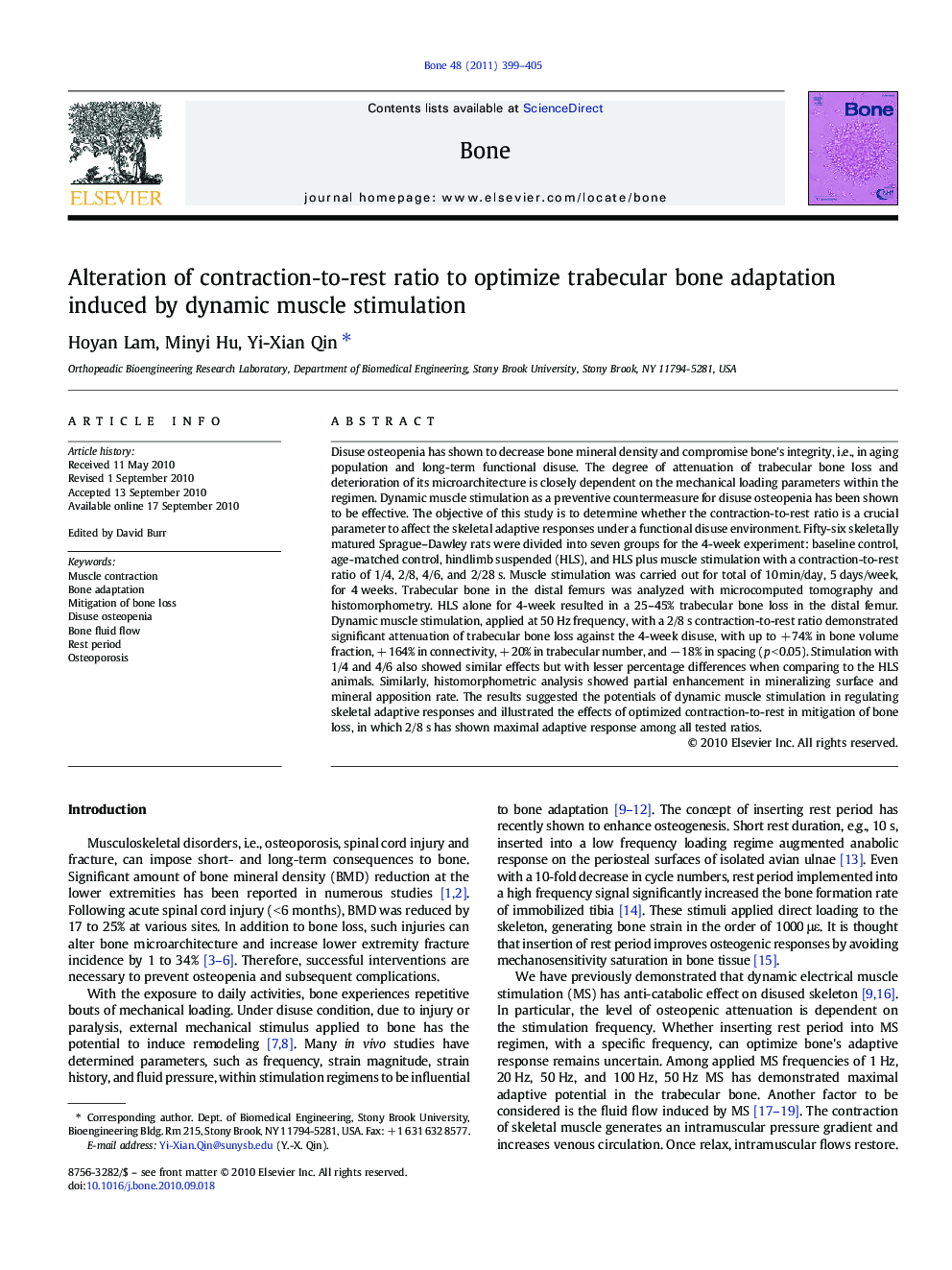| کد مقاله | کد نشریه | سال انتشار | مقاله انگلیسی | نسخه تمام متن |
|---|---|---|---|---|
| 2780486 | 1153299 | 2011 | 7 صفحه PDF | دانلود رایگان |

Disuse osteopenia has shown to decrease bone mineral density and compromise bone's integrity, i.e., in aging population and long-term functional disuse. The degree of attenuation of trabecular bone loss and deterioration of its microarchitecture is closely dependent on the mechanical loading parameters within the regimen. Dynamic muscle stimulation as a preventive countermeasure for disuse osteopenia has been shown to be effective. The objective of this study is to determine whether the contraction-to-rest ratio is a crucial parameter to affect the skeletal adaptive responses under a functional disuse environment. Fifty-six skeletally matured Sprague–Dawley rats were divided into seven groups for the 4-week experiment: baseline control, age-matched control, hindlimb suspended (HLS), and HLS plus muscle stimulation with a contraction-to-rest ratio of 1/4, 2/8, 4/6, and 2/28 s. Muscle stimulation was carried out for total of 10 min/day, 5 days/week, for 4 weeks. Trabecular bone in the distal femurs was analyzed with microcomputed tomography and histomorphometry. HLS alone for 4-week resulted in a 25–45% trabecular bone loss in the distal femur. Dynamic muscle stimulation, applied at 50 Hz frequency, with a 2/8 s contraction-to-rest ratio demonstrated significant attenuation of trabecular bone loss against the 4-week disuse, with up to + 74% in bone volume fraction, + 164% in connectivity, + 20% in trabecular number, and − 18% in spacing (p < 0.05). Stimulation with 1/4 and 4/6 also showed similar effects but with lesser percentage differences when comparing to the HLS animals. Similarly, histomorphometric analysis showed partial enhancement in mineralizing surface and mineral apposition rate. The results suggested the potentials of dynamic muscle stimulation in regulating skeletal adaptive responses and illustrated the effects of optimized contraction-to-rest in mitigation of bone loss, in which 2/8 s has shown maximal adaptive response among all tested ratios.
Journal: Bone - Volume 48, Issue 2, 1 February 2011, Pages 399–405